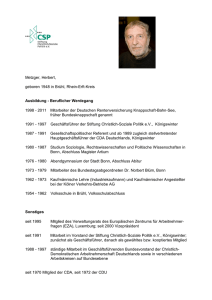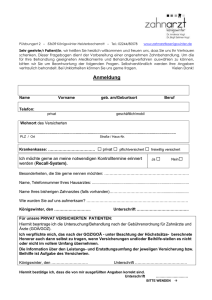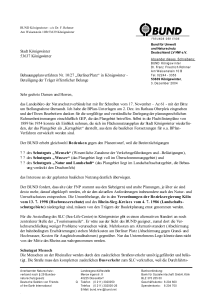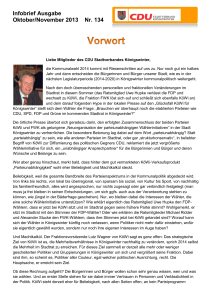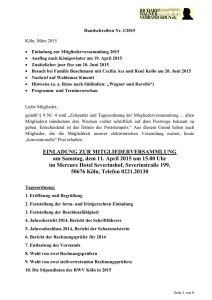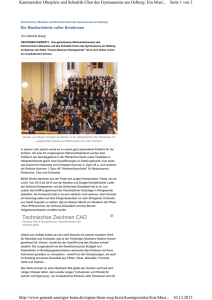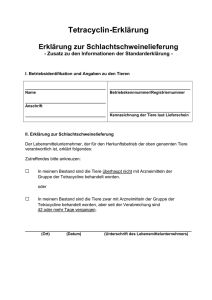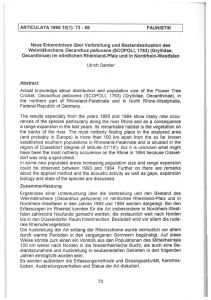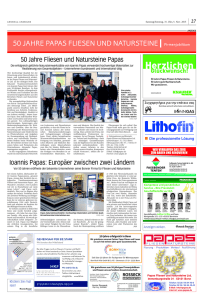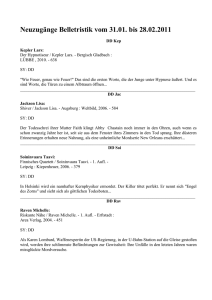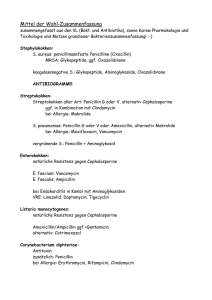Antibiotikaverbrauch im ambulanten Versorgungsbereich
Werbung
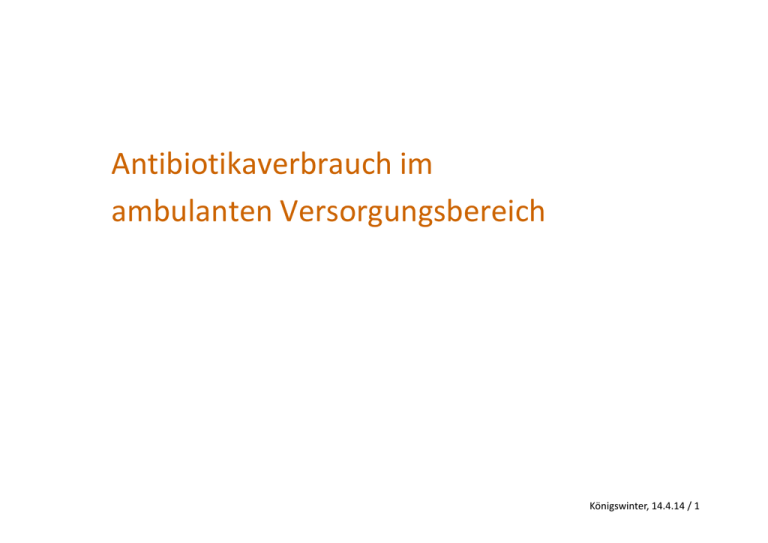
Antibiotikaverbrauch im ambulanten Versorgungsbereich Königswinter, 14.4.14 / 1 Verordnungsdichte im ambulanten Bereich, 2006-2011 (in DDD pro 1.000 Versicherte und Tag) Königswinter, 14.4.14 / 2 Antibiotika-Verordnungsdichten im ambulanten Versorgungsbereich (DDD/1.000 Versichertentage) zunehmend Makrolide Fluorchinolone an 3. Stelle zunehmend Tetracycline vorwiegend Basispenicilline Fluorchinolone an 1. Stelle & Oralcephalosporine Tetracycline > Penicilline > Makrolide Quelle: WIdO - GKV-Arzneimittelindex Königswinter, 14.4.14 / 3 Antibiotika-Verordnungsdichten im ambulanten Versorgungsbereich, 2011 (DDD/1.000 Versichertentage) Quelle: WIdO - GKV-Arzneimittelindex Königswinter, 14.4.14 / 4 Antibiotika-Verordnungsdichten im ambulanten Versorgungsbereich, 2011 (DDD/1.000 Versichertentage) Ost Süd West Basispenicilline 1,95 3,00 4,55 Tetracycline 2,52 2,26 2,85 Oralcephalosporine, Aminopenicillin mit β-Lactamase-Inhibitor, Flucloxacillin 2,53 2,99 3,32 Neuere Makrolide/Ketolide/ Azalide 1,72 1,66 1,99 Chinolone 1,37 1,45 1,54 Folsäureantagonisten 0,49 0,56 0,69 Nitrofurantoin und andere spezielle Harnwegsantibiotika 0,40 0,37 0,53 Erythromycin und andere ältere Makrolide 0,24 0,15 0,27 Lincosamine/Streptogramine/ Fusidinsäure 0,26 0,20 0,29 Quelle: WIdO - GKV-Arzneimittelindex Königswinter, 14.4.14 / 5 Greece Cyprus* Romania* Belgium France Italy Luxembourg Slovakia* Malta Portugal Ireland Iceland* Poland Spain Finland Bulgaria Lithuania* United Kingdom Czech Republic Denmark Norway Hungary Austria Slovenia Sweden Germany Latvia Estonia Netherlands Antibiotikaverbrauch im ambulanten Bereich Verbrauchsdichte im europäischen Vergleich, 2011 (DDD/1.000 Versichertentage) 14,1 11,4 Quelle: ESAC/ESAC-Net *Gesamtverbrauch Königswinter, 14.4.14 / 6 Antibiotikaverbrauch im ambulanten Bereich Verordnungsdichte, 2011 DDD/1.000 Einwohner Deutschland Schweden Penicilline (J01C) 3,9 7,1 Cephalosporine & andere β-Lactame (J01D) 2,7 0,2 Tetracycline (J01A) 2,6 3,5 Makrolide, Lincosamide, Streptogramine (J01F) 2,3 0,6 Chinolone (J01M) 1,5 0,8 Sulfonamide und Trimethoprim (J01E) 0,6 0,5 Andere 0,5 1,6 Gesamt (J01) 14,1 14,3 Quelle: ESAC/ESAC-Net Königswinter, 14.4.14 / 7 Verordnungsvolumen nach Antibiotikagruppen, 2001 vs 2011 (in Mio. DDD) 90 84 81 2001 80 Mio. DDD 66 69 68 70 60 64 59 60 2010 57 60 58 2011 50 40 30 20 38 38 37 27 21 18 28 27 16 14 10 0 Penicilline Aminopenicilline Cephalosporine Tetracycline Makrolide / Sulfonamid Clindamycin -Komb. Fluorchinolone Quelle: WIdO - Arzneiverordnungsreport Königswinter, 14.4.14 / 8 Verordnungsvolumen von Ciprofloxacin (DDD) in verschiedenen KV-Regionen, 2001-2007 DDD-Kosten • 2002: 9,80 € • 2011: 2,59 € Cefuroximaxetil DDD-Kosten • 2002: 5,82 € • 2011: 1,42 € 20 01 20 02 20 03 20 04 20 05 20 06 20 07 Ciprofloxacin Quelle: WIdO, GKV-Arzneimittelindex Königswinter, 14.4.14 / 9 160 120 80 Amoxicillin Doxycyclin Penicillin V 40 Saisonaler Einsatz von Antibiotika DDD/1.000 Versicherte pro Monat; 1/2007 – 6/2011 0 60 40 20 0 30 Cefuroxim Clarithromycin Roxithromycin Cefaclor Azithromycin Amoxicillin/BLI Cefixim Erythromycin Cefpodoxim Cefadroxil Cotrimoxazol Ciprofloxacin 20 Levofloxacin Clindamycin Minocyclin 10 Moxifloxacin Norfloxacin 0 Quelle: WIdO, GKV-Arzneimittelindex Ofloxacin Königswinter, 14.4.14 / 10 Antibiotikaverbrauch im stationären Versorgungsbereich Königswinter, 14.4.14 / 11 Antibiotikaverbrauch in Deutschland, 1991-2013 - Krankenhausmarkt (Zähleinheiten, ZE) 160.000 140.000 ZE (x 1.000) 120.000 100.000 80.000 60.000 40.000 20.000 0 '91 '93 '95 '97 '99 '01 '03 '05 '07 '09 '11 '13 Jahr Quelle: IMS Health Königswinter, 14.4.14 / 12 Antibiotikaverbrauch in Deutschland, 1991-2013 - Krankenhausmarkt (Zähleinheiten, ZE) 50.000 BreitspektrumPenicilline 40.000 ZE (x 1.000) Cephalosporine 30.000 Fluorchinolone 20.000 Makrolide & vergl. Subst. 10.000 Trimethoprim & vergl. Subst. 0 '91 '93 '95 '97 '99 '01 '03 '05 '07 '09 '11 '13 Jahr Quelle: IMS Health Königswinter, 14.4.14 / 13 Antibiotikaverbrauch in Deutschland, 1991-2013 - Krankenhausmarkt (Zähleinheiten, ZE) 12.000 Sonstige Penicilline ZE (x 1.000) 9.000 Aminoglykoside Tetracycline 6.000 Carbapeneme 3.000 Glykopeptide 0 '91 '93 '95 '97 '99 '01 '03 '05 '07 '09 '11 '13 Jahr Quelle: IMS Health Königswinter, 14.4.14 / 14 Antibiotika-Verbrauchsdichten nach Stationsart im Jahr 2010 Median (Interquartilbereich) in DDD/100 Pflegetage Kern et al. (2012) Krankenhaushygiene up2date 7: 155-66 Königswinter, 14.4.14 / 15 Prävalenz des Antibiotikaeinsatzes im KRKH *PPS data representativeness was poor in Austria, Croatia, Czech Republic, Estonia, Norway and Romania and very poor in Denmark and Sweden. Quelle: ECDC PPS 2011-12 Königswinter, 14.4.14 / 16 Indikationen der Antibiotikaanwendung ECDC Prävalenzuntersuchung 2011-12 (% Anteil) NIDEP 1 Untersuchung 1994 (% Anteil) Ambulant erworbene Infektion 48,0 47,9 Nosokomiale Infektion 18,3 16,9 Prophylaxe 29,3 35,1 4,4 - Ursache der Anwendung Andere Quelle: ECDC PPS 2011-12 Königswinter, 14.4.14 / 17 Patienten mit chirurgischer Prophylaxe > 1 Tag *PPS data representativeness was poor in Austria, Croatia, Czech Republic, Estonia, Norway and Romania and very poor in Denmark and Sweden. Quelle: ECDC PPS 2011-12 Königswinter, 14.4.14 / 18 TOP 10 verordnete Antibiotika im Krankenhaus und ihr jeweiliger Anteil am Gesamtverbrauch (RDD) Parenterale Antibiotika 2011 2008 2004 Wirkstoff % Orale Antibiotika 2011 2008 2004 Wirkstoff Cefuroxim1. 1. 1. axetil 2. 3. 3. Ciprofloxacin % 1. 1. 2. Ceftriaxon 10,1 2. 2. 1. Cefuroxim 6,0 3. 7. 6. Piperacillin/ Tazobactam 5,9 3. 2. 5. Levofloxacin 4,3 4. 3. 3. Metronidazol 4,4 4. 9. 7. Amoxicillin/ Clavulansäure 3,7 5. 4. 5. Ampicillin/ Sulbactam 3,6 5. 4. 2. Cotrimoxazol 3,6 6. 7. 8. 9. 10. 6. 10. 11. 12. 8. 4. 11. 10. 7. Meropenem Cefazolin Ciprofloxacin Imipenem Vancomycin 2,5 2,5 2,1 2,0 1,9 6. 7. 8. 9. 10. 7. 8. 5. 10. 12. 10. 6. 4. 9. Clarithromycin Metronidazol Sultamicillin Amoxicillin Clindamycin 3,2 3,0 2,8 2,6 2,1 Quelle: MABUSE-Netzwerk / ADKA-if-RKI-Surveillance 6,8 5,4 Königswinter, 14.4.14 / 19 Resistenzprobleme durch Breitspektrum-Antibiotika • Cephalosporine wie Cefuroxim, Cefixim, Cefpodoxim, Cefotaxim, Ceftriaxon und Ceftazidim selektieren – Gram-negative Problemkeime (ESBL-bildende E. coli und Klebsiella spp., β-Lactam-resistente Acinetobacter spp.) – Gram-positive Problemkeime wie Vancomycin-resistente Enterokokken – das gehäufte Auftreten von Clostridium difficile • Fluorchinolone selektieren – Methicillin-resistente Staphylococcus aureus (MRSA) – Fluorchinolon-resistente gramnegative Erreger – Fluorchinolon-resistente E. coli mit Multi-Drug-Resistenz – multiresistente Pseudomonas aeruginosa – das gehäufte Auftreten von Clostridium difficile Livermore (2005) Lancet Infect Dis 5:450-459 Jacoby & Munoz-Price (2005) N Engl J Med 352:380-91 Paterson (2004) Clin Infect Dis 38 (suppl 4):S341–S345 Königswinter, 14.4.14 / 21 Multiresistente Erreger auf deutschen Intensivstationen Meyer / Schwab, KISS-SARI Daten aus 2001 - 2011 MRE pro 1000 Patiententage 10 3GC resistant E. coli 3GC resistant K. pneumoniae Imipenem resistant A. baumannii Vancomycin resistant E. faecium MRSA 8 6 4 2 0 2001 2002 2003 2004 2005 2006 Methicillin-resistant Staphylococcus aureus (MRSA) 3.-Gen.-Cephalosporin-resistant Escherichia coli 2007 2008 2009 2010 2011 Vancomycin-resistant Enterococci Carbapenem-resistant Acinetobacter baumannii 3.-Gen.-Cephalosporin-resistant Klebsiella pneumoniae Königswinter, 14.4.14 / 22 Patienten mit gastrointestinalen HAI *PPS data representativeness was poor in Austria, Croatia, Czech Republic, Estonia, Norway and Romania and very poor in Denmark and Sweden. Quelle: ECDC PPS 2011-12 Königswinter, 14.4.14 / 23 Antimicrob Agents Chemother 2013; 57: 3659-66 Together, these data suggest that oral administration of antibiotics has a prominent effect on AR amplification and development in gut microbiota, which may be minimized by alternative drug administration approaches, as illustrated by i.v. injection in this study and proper drug selection. Königswinter, 14.4.14 / 24 Strategische Ansätze zur Reduktion des Antibiotikaverbrauchs in der Humanmedizin • Hauptaugenmerk von ABS-Aktivitäten im ambulanten Bereich → „ESBL-Rate“ senken Reduktion des Ceph.- und FQ-Verbrauchs Reduktion des Antibiotikaverbrauchs (v. a. bei Atemwegsinfektionen) Reduktion des Amoxicillin-Verbrauchs in den alten Bundesländern → So wenig wie nötig, so gezielt wie möglich (verbesserte Diagnostik, delayed prescription) Impfungen Preisgestaltung bei Antibiotika überprüfen Königswinter, 14.4.14 / 25 Strategische Ansätze zur Reduktion des Antibiotikaverbrauchs in der Humanmedizin • Stationärer Bereich Qualität der Antibiotikaverordnung verbessern Reduktion des Ceph.- und FQ-Verbrauchs (Pip./Tazo.?) Orale Antibiotikatherapie kritisch hinterfragen ⇒ So wenig wie nötig, so gezielt wie möglich Dauer der chirurgischen Prophylaxe senken Strikte Einhaltung infektionspräventiver Maßnahmen Entwicklung von Antibiotika mit neuen Zielstrukturen fördern Königswinter, 14.4.14 / 26 GERMAP http://www.p-e-g.org/econtext/germap Vielen Dank
